 FRAMEWORK FOR A TAXONOMY OF FRAUD
FRAMEWORK FOR A TAXONOMY OF FRAUD
Because no uniform classification system currently exists, researchers and practitioners have relied on inconsistent definitions and categorizations of fraud. This affects fraud prevalence estimates as well as our understanding of the mechanisms and consequences of individual financial fraud. To address this problem, the Financial Fraud Research Center at Stanford Center on Longevity and the FINRA Investor Education Foundation (FINRA Foundation) collaborated with fraud experts to develop a standardized fraud classification scheme. The purpose was to group and organize fraud types meaningfully and systematically into a hierarchical framework that can be translated into survey questions and administered as a supplement to the core National Crime Victimization Survey. This future survey will be used to determine the annual prevalence of specific types of financial fraud and how prevalence rates change over time. Read more. >
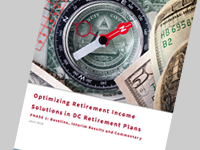 OPTIMIZING RETIREMENT INCOME SOLUTIONS IN DEFINED CONTRIBUTION RETIREMENT PLANS, PHASES 1-4
OPTIMIZING RETIREMENT INCOME SOLUTIONS IN DEFINED CONTRIBUTION RETIREMENT PLANS, PHASES 1-4
In collaboration with the Society of Actuaries, the Center has completed four papers that identify new retirement income solutions to be utilized by retirement plan advsiors and consultants.
Read the papers >
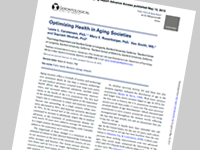 OPTIMIZING HEALTH IN AGING SOCIETIES
OPTIMIZING HEALTH IN AGING SOCIETIES
Prepared in support of the 2015 White House Conference on Aging Optimizing Health in Aging Societies traces the sources of longevity and health gains made in the last 50 years and concludes that similar strategies will not be enough to extend these gains into the future. In addition to medical treatments that target disease, national focus must expand to encompass behavior change aimed at disease prevention. The paper is a call to action to invest in creating the methods and technologies needed to encourage lifestyle changes that will reduce chronic disease and unlock the potential of an aging society. Read the paper >
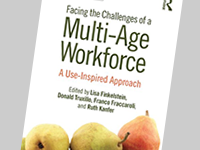 FACING THE CHALLENGES OF A MULTI-AGE WORKFORCE
FACING THE CHALLENGES OF A MULTI-AGE WORKFORCE
Facing the Challenges of a Multi-age Workforce looks at the impact of significant changes in the workplace resulting from the rapidly aging workforce. Contributors present real problems and solutions to an array of situations facing employers worldwide. Using the input from the SCL conferences, Adapting to an Aging Workforce, the chapter, “Optimizing Older Workforces”, outlines some of the common concerns that employers have about older workers in the workplace and describes a growing body of research that indicates many of those misconceptions are unfounded. Read more >
 THE FUTURE OF AGEING: THE GLOBAL CHALLENGE
THE FUTURE OF AGEING: THE GLOBAL CHALLENGE
An article contributed by the Center to Future Agenda notes that advances in science and technology coupled with large-scale changes in health practices involving improved sanitation, water purification, and a host of lifestyle changes have led to dramatic increases in longevity in developed nations around the world. On a global scale, life expectancies in developed regions are continuing to rise in the 21st century and, although most people assume that there are biological limits on life span, so far there is little evidence that we are approaching them. Read more >
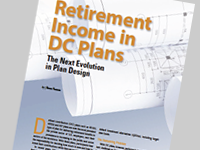 RETIREMENT INCOME IN DC PLANS: THE NEXT EVOLUTION IN PLAN DESIGN
RETIREMENT INCOME IN DC PLANS: THE NEXT EVOLUTION IN PLAN DESIGN
This article by Steve Vernon, published in Benefits Magazine, presents current retirement income challenges faced by participants in DC plans and the opportunities for employers to leverage their resources to make a positive financial impact on their employees’ retirement. Read the article >
 THE FUTURE OF FINANCIAL WELLNESS
THE FUTURE OF FINANCIAL WELLNESS
The Stanford Center on Longevity convened a conference in September 2014 to bring together a small group of academic researchers, consultants, and employers to discuss and debate how financial wellness programs can improve financial security of employees and customers. Attendees explored effective financial literacy programs, discussed lessons learned from employer-sponsored health and financial wellness programs, and considered methods for applying behavioral finance research to improve program outcomes. Read the proceedings >
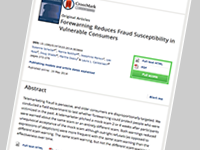 FOREWARNING REDUCES FRAUD SUSCEPTIBILITY IN VULNERABLE CONSUMERS
FOREWARNING REDUCES FRAUD SUSCEPTIBILITY IN VULNERABLE CONSUMERS
This article, published in Basic and Applied Social Psychology, presents results from a field experiment that examined the effectiveness of forewarning in reducing susceptibility to a mock phone scam. Laura Carstensen, Founding Director of the Stanford Center on Longevity, and Martha Deevy, Director of the Financial Security Division of SCL, were involved in the project. Read the proceedings >
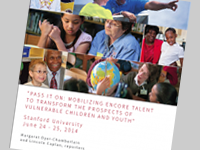 PASS IT ON: MOBILIZING ENCORE TALENT TO TRANSFORM THE PROSPECTS OF VULNERABLE CHILDREN AND YOUTH
PASS IT ON: MOBILIZING ENCORE TALENT TO TRANSFORM THE PROSPECTS OF VULNERABLE CHILDREN AND YOUTH
The conference, “Pass it On: Mobilizing Encore Talent to Transform the Prospects of Vulnerable Children and Youth,” was sponsored by the Stanford Center on Longevity, the David & Lucile Packard Foundation, and Encore.org and was held at the Bechtel Conference Center at Stanford University on June 24 and 25, 2014. The goal of the Pass It On conference was to explore what must be accomplished to establish new norms in American culture, so more people in the second half of life will choose, and be able, to invest in future generations and increase cooperation among generations. Read the proceedings >
 THE IMPACT OF SURVEY CONTEXT ON SELF-REPORTED FRAUD VICTIMIZATION
THE IMPACT OF SURVEY CONTEXT ON SELF-REPORTED FRAUD VICTIMIZATION
The Center initiated a survey research project that assesses whether, and to what extent, modifications to survey design and context will affect self-reported rates of individual fraud victimization. This study uses an experimental design to compare self-reported fraud victimization among three different versions of a self-report survey. This Issue Brief presents the results for a general audience and an academic paper is forthcoming. Read the issue brief >